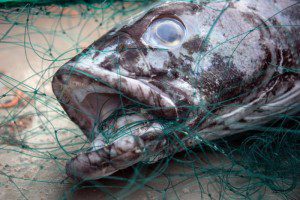By Tracy Brighten
The poaching vessel Taishan, detained in Phuket since March, has fled the port with its illegal Patagonia toothfish, or ‘Chilean sea bass’, cargo.
The Thai Royal Navy (TRN) has launched an air and sea search for the illegal fishing vessel Taishan, or Kunlun as it was formerly known, reports AEC News Today. The search involves TRN aircraft and patrol boats, as well as the Department of Fisheries and the Thai police marine division.
Following a joint investigation between Interpol, Sea Shepherd and authorities in Thailand, Australia and New Zealand, the ship has been detained in Phuket since March when the crew attempted to offload 182 tons of illegally caught Patagonian toothfish as grouper fish.
AEC News Today says that media reports saying the Taishan fled after paying storage fees and having its cargo returned are inaccurate.
A Thai naval officer said the Thai Customs Act was enforced to punish the Taishan’s captain for falsely declaring 182 tons of toothfish worth around US$5 million as grouper worth US$414,400.
“The unregulated fishing of the Taishan is not illegal under the laws of Thailand applicable to the high seas, but we have tried our best to accommodate,“ the officer told AEC News Today.
“We seized the goods and later the vessel’s operator paid the fine and had right to claim their fish in accordance with the law.”
However, because the Taishan was involved in illegal, unreported, and unregulated (IUU) fishing activities the officer said the TRN Command Center to Combat Illegal Fishing had used recent Thai regulations to prevent the ship from leaving Phuket port.
The Kunlun’s illegal activities were first alerted by the New Zealand Navy in January when the vessel was seen with two other ships fishing illegally in Antarctic waters. A patrol boat was able to get close enough to take video footage and photographs of fishermen with toothfish, said the Guardian.
The navy were refused permission to board, and swells made boarding by force too dangerous. Through Interpol, New Zealand alerted 190 countries to the vessels. NZ patrol boat commanding officer Lt. Cmdr. Graham MacLean believed that collecting evidence would help the international community to stop the poachers selling their fish, reports the Guardian.
New Zealand’s foreign minister Murray McCully believed the Spanish company Vidal Armadores, prosecuted in 2008 for illegal fishing, was involved in the poaching.
All three ships hoisted an Equatorial Guinea flag, but records for the ships show frequent changes of name, country of registration, and ownership details in an attempt to avoid detection of poaching activities.
The Kunlun was intercepted again in February by Sea Shepherd’s Sam Simon vessel inside Australian waters. The Sam Simon pursued the Kunlun for eight days, chasing the poaching vessel out of its illegal fishing grounds.
In partnership with the Bob Barker vessel, the Sam Simon was involved in Operation Icefish, Sea Shepherd’s 11th Southern Ocean Defense campaign, and the first to target IUU fishing operators in Antarctic and sub-Antarctic waters.
Later in February, Australian Customs and Border Protection officers boarded the Kunlun near Keeling Islands to collect evidence, but took no further action.
In a Sea Shepherd press release, Peter Hammarstedt, Captain of the Bob Barker and Chairman of Sea Shepherd Australia, has criticized Australia and New Zealand for not apprehending the Taishan earlier in the year.
“As the Taishan has now escaped from Thailand with its illegal catch in-tow, we are seeing this blunder for what it really is. If the vessel had been arrested by Australia or New Zealand, the catch would never have been returned.”
Hammarstedt acknowledges that Thai authorities were limited by Thai law in dealing with International fishery crime.
Researchers rely on legal fishing operator data. Although fishing quotas systems attempt to take into account IUU fishing, the lack of data for IUU makes population estimates more difficult.
Antarctic and Patagonian toothfish, sold in the U.S, China and Japan as Chilean sea bass is a white, flaky fish similar to cod. Increased demand from restaurants has depleted stocks around Chile and Argentina, so larger ships are sent further afield.
Toothfish can grow up to 2 m long and up to 120 kg in weight. Poaching is common because the fish is highly lucrative. One vessel can catch 1500 tons with a potential value of US$83 million. Legal fisheries use long lines and baited hooks with strict regulations to minimise seabird bycatch, such as putting lines out at night, sinking lines and not throwing offal overboard.
Illegal operators use gillnets – long walls of fine mesh nets, referred to as ‘ghost nets’ because their invisibility traps seabirds and marine mammals as bycatch. Lost or discarded gillnets are an ongoing threat to wildlife.
Operation Icefish campaign leaders warn that Taishan’s illegal toothfish haul is highly likely to be sold on the black market, since the catch of the other two ships has disappeared. Sea Shepherd has called on the Australian and New Zealand authorities and relevant international enforcement agencies to locate the Taishan that carries an Interpol Purple Notice.
Ocean ecosystems are finely balanced. Illegal fishing of toothfish further depletes dwindling populations that are being managed to ensure sustainable fishing of toothfish, as well as to protect food sources for toothfish predators.
If illegal fishing of toothfish is to be stopped then New Zealand and Australian authorities must seize the opportunity when they intercept a poaching vessel, given the difficulty of policing such a large ocean area. Waiting for these ships to reach port and relying on local laws has failed to stop the Taishan.
Ultimately, consumers can play their part in stopping the trade in illegally caught toothfish by only buying Chilean sea bass that is Marine Stewardship Council (MSC) certified.
Image credit: Patagonian toothfish by the U.S FDA on Wikimedia
